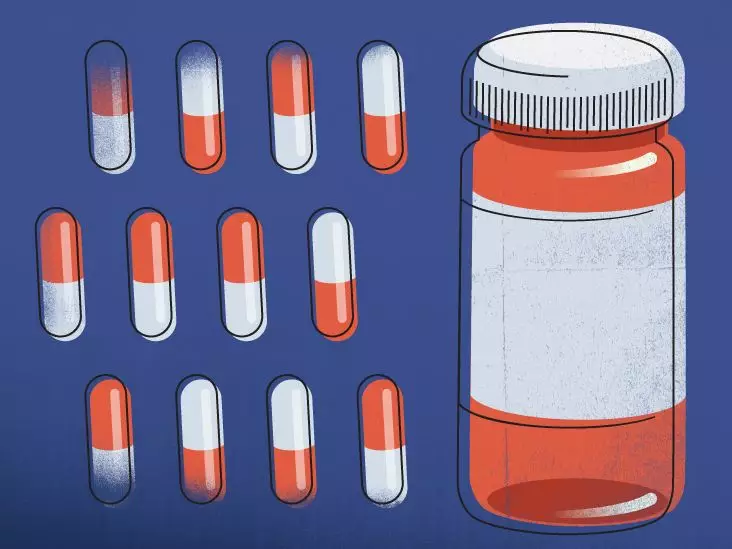Venlafaxine, marketed under the brand name Effexor XR, is a broadly prescribed medication that targets anxiety and depressive disorders. As a serotonin-norepinephrine reuptake inhibitor (SNRI), it holds potential for patients navigating the complexities of mental health. However, effectiveness is not only contingent on the medication itself but significantly relies on individualized dosing, which should be tailored to suit the specific needs of each patient. The initiation of therapy usually begins at a low dosage, with adjustments made based on efficacy and tolerability. This granular approach to medication underscores the importance of personalized healthcare, moving away from a one-size-fits-all philosophy.
Determining the correct dosage is a meticulous process, hinging on the patient’s unique diagnosis, treatment goals, and personal response. Medical professionals often start by prescribing a minimal effective dose that can be gradually ramped up: a practice that mitigates the risk of adverse effects while finding the sweet spot for optimum benefits. Therefore, patients must remain attuned to their body’s responses, ready to communicate any challenges to their healthcare providers.
Understanding Dosage Variability Among Conditions
Venlafaxine is approved for a variety of mental health disorders, including generalized anxiety disorder (GAD), social anxiety disorder, panic disorder, and major depressive disorder. Each condition has its own set of standard dosages, which further accentuates the customized nature of this therapy. For example, an adult suffering from GAD typically begins with a dose of 75 mg per day, but this could be adjusted to start at 37.5 mg for those requiring a gentler introduction. This gradual ramp-up accommodates the individual’s adaptation to the medication, promoting patience in the treatment process.
In contrast, adults dealing with panic disorders may commence at an even lower dose while still adhering to similar step-ups in dosing. Each increase in dosage is a carefully calculated decision by healthcare professionals based on ongoing assessments, which encourages collaboration between the patient and doctor. Such adaptive strategies help clinicians ensure that realities of treatment are aligned with the ambitions of healing.
The Practicality of Extended-Release Capsules
Venlafaxine comes in an extended-release (ER) capsule form, which is typically administered once daily. This design is not merely a convenience but also a strategic choice, offering a steady release of medication over an extended period. Patients benefit from this formulation both in terms of efficacy and adherence to their treatment plan. It reduces the need for multiple doses throughout the day, thereby simplifying medication management in a patient’s daily routine.
Nevertheless, patients must resist the temptation to manipulate the medication—swallowing the capsules whole or consuming their contents as instructed protects the integrity of the extended-release function. Misuse can jeopardize the medication’s efficiency, possibly leading to insufficient treatment or adverse effects. As such, empowerment through education on proper medication administration proves essential.
Monitoring Side Effects and Adjusting Dosage
While the journey with venlafaxine is promising, it is accompanied by a nuanced understanding of potential side effects. As with any medication, the risk of adverse reactions highlights the critical role of communication between patients and healthcare professionals. It is vital for users to report side effects, especially if they compromise adherence to the regimen. From mild issues like nausea to more severe symptoms that could arise from an overdose, forming an open dialogue is paramount for both safety and treatment efficacy.
Consideration of side effects should not instill fear in the patient but rather foster a proactive stance toward treatment. Recognizing the signs of both effective therapy and potential adverse effects can cultivate a sense of control for patients, igniting a proactive pursuit of their mental wellness.
The Long-Term Perspective on Venlafaxine Therapy
In many instances, venlafaxine is viewed as a long-term solution, amalgamated into the overarching strategy for battling mental health challenges. Patients should not shy away from sustained treatment, especially when they establish that the medication aligns with their therapeutic goals. That said, the journey is intricate and requires ongoing adjustment, which reinforces the necessity of continuous follow-up with healthcare professionals.
The ongoing assessment not only identifies necessary dosage modifications but also fosters an adaptable treatment regime that can evolve with a patient’s shifting mental health landscape. It empowers them to take ownership of their treatment while ensuring that they are supported every step of the way.
Through informed awareness and continued dialogue, venlafaxine can truly shine as a beacon of hope for those grappling with mental health.

